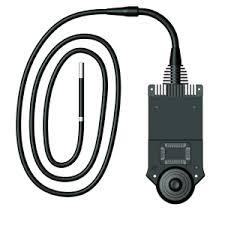In precision-driven industries, where maintenance, diagnostics, and quality assurance must be executed flawlessly, inspection accuracy is critical. Whether it’s spotting micro-fractures in engine components or assessing the condition of hard-to-reach internal structures, high-quality visual inspection tools make all the difference. One standout solution in the modern toolkit is the 4mm videoscope, a compact yet powerful device designed to enhance visibility, access, and, most importantly, accuracy. Professionals seeking enhanced visibility in confined areas often turn to a borescope and inspection camera combination for accurate diagnostics and real-time documentation during critical maintenance tasks.
As technology continues to evolve, the 4mm videoscope is emerging as a trusted ally across industries such as aviation, automotive, energy, manufacturing, and infrastructure. Its compact diameter allows navigation through narrow, complex spaces, while its advanced features ensure that nothing is missed during inspection.
Why Accuracy Matters More Than Ever?
Modern equipment is more sophisticated, smaller, and more densely constructed than in the past. As components shrink and systems become more tightly integrated, the margin for error grows smaller. Inaccurate diagnostics can result in costly downtime, safety hazards, or even catastrophic failures. That’s why the demand for inspection tools that deliver precise, real-time insights is rapidly increasing.
Inspection professionals no longer just need access—they need accurate, high-resolution visuals and the ability to assess components with total confidence. This is where the 4mm videoscope excels, delivering precise results even in the most confined environments.
The Power Of Precision Imaging
At the core of a 4mm inspection tool lies its imaging technology. Equipped with high-definition cameras and state-of-the-art optics, this tool captures clear, detailed visuals even in low-light or obstructed environments. Many models include adjustable LED lighting that enhances image brightness and contrast, ensuring defects like corrosion, wear, or fractures are easy to identify.
What sets this tool apart is not just the image quality but the consistency of that quality, regardless of space constraints. It allows technicians to maintain sharp visual clarity while navigating through complex paths, ensuring that inspections are both thorough and reliable.
Articulation And Control In Tight Areas
Advanced 4mm scopes are engineered for maximum control. With 2-way or 4-way articulation, operators can steer the tip of the scope in multiple directions, allowing them to explore corners, angles, and otherwise hidden sections with ease. This maneuverability is essential in settings such as jet engines, plumbing systems, or compact industrial machinery.
Accurate control not only enhances the inspector’s ability to locate issues—it also reduces the risk of missing subtle faults that could evolve into serious problems later. Combined with flexible insertion tubes, this level of dexterity ensures complete coverage during internal inspections.
Data Capture And Documentation
Another key feature of advanced 4mm tools is the ability to record and store data directly from the inspection process. Integrated video recording, still image capture, and digital storage allow for accurate documentation of findings. This not only supports real-time decision-making but also creates an archive for compliance, quality assurance, or client reporting.
Some models even offer wireless connectivity, enabling inspectors to stream visuals live to remote teams or export data instantly for review. This improves collaboration and reduces delays in the maintenance or repair process.
Compact Design, Maximum Versatility
The compact 4mm diameter isn’t just about squeezing into small spaces—it’s about doing so without compromising performance. These scopes are small enough to access narrow piping, engine cylinders, electrical housings, and internal welds, yet robust enough to handle demanding environments.
Because of this balance between size and functionality, they are used in a wide variety of applications—from inspecting fuel lines in vehicles to analyzing heat exchanger tubes or verifying cleanroom machinery. It’s the kind of versatility that makes this tool a long-term investment in operational efficiency.
Conclusion
Accuracy in inspection isn’t just about what you see—it’s about how reliably and consistently you can see it. With advanced 4mm videoscope technology, inspection professionals can achieve both, even in the most confined and challenging spaces. By combining precision imaging, superior articulation, and robust documentation tools, this compact device boosts not only the quality of inspections but the confidence behind every maintenance decision. In an age where detail defines success, investing in smarter, smaller, and sharper tools is the key to staying ahead—and the 4mm scope delivers exactly that.

